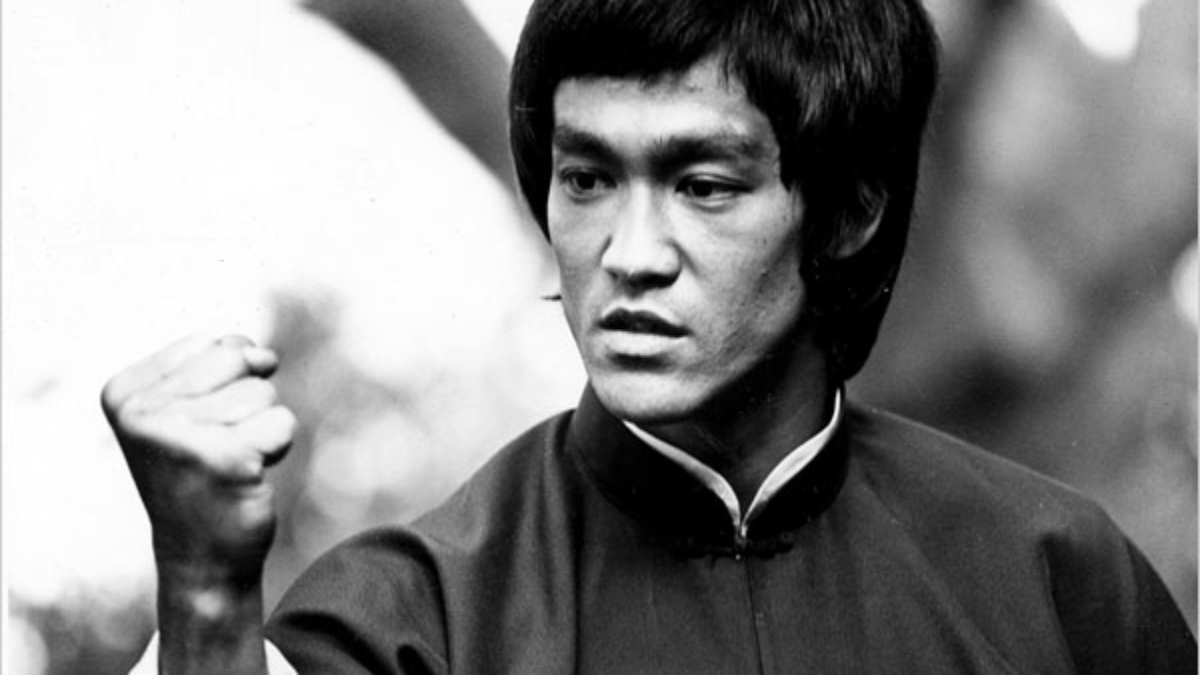Happy Birthday, Bruce Lee! A Look Back at the Martial Arts Legend
by Beth Kelly
Of all of the iconic cinematic figures from the 20th century, Bruce Lee still stands alone. His movies seared the image of an incredibly strong, graceful and resourceful fighter in the minds of children and adults in almost every country in the world. Beyond inspiring decades of action movies and actors, Lee’s persona has impacted a variety of other areas completely unrelated to the silver screen. His legend still looms large in today’s culture.
The international impact of Lee’s work belies the fact that he only worked on five motion pictures. Despite having his life and career cut drastically short, Lee put together fight scenes that set the standard for almost every martial arts movie to come – all while making a name for himself as an Asian film hero. As a Chinese-American icon, he portrayed himself as strong, dominant, and masculine – much different than the stereotypical depiction of Asian movie characters at the time. Lee’s combined influence in the spheres of combat sports, philosophy, fitness, and cinema also allowed him to rise as a symbol of Asian-American social justice.
Of course, Lee himself was also an amazing specimen. Despite being rather diminutive, standing a mere 5’7” and weighing just 135 pounds, he demonstrated the physical gifts of a much larger man. He never let his size deter him from participating in physical sport, sharpening his mental focus to complement his natural physical abilities. Many people found inspiration while watching this smaller man take on large, terrifying opponents and dominating them. His second Hong Kong produced martial arts film, The Big Boss (released in the United States as Fist of Fury), plunged deep into the heart of Asian audiences. When Lee’s character spoke to his Japanese opponents saying, “Now you listen to me, and I’ll only say this once- we are not sick men,” the crowd went wild. Bruce Lee rose to superstardom almost overnight.
[youtube]https://www.youtube.com/watch?v=2__AvNVfexk[/youtube] Trailer of Fist of Fury (1972)Fans can thank Lee’s philosophy and his keen study of the human body for being capable of capturing such amazing martial arts techniques on film. A sense of cool practicality underpinned everything Lee did on screen as well in his constant martial arts training. He kept his eyes open for new techniques and tried to incorporate whatever worked best in a given situation. This set him apart from other martial artists at the time, even alienating him from some of them. Chuck Norris described Lee as open-minded and willing to learn from anyone. Though Lee was arguably the greatest martial artist of his time, he was always improving.
Jeet Kune Do, the martial arts practice Lee created himself, derived its primary tenets from Lee’s admiration of “formless” strength. Water’s perfect flexibility was his ideal. To Lee, many forms of martial arts had calcified and no longer remained applicable in real situations. They also fed off of secrecy and selective training. Lee, on the other hand, believed in a “style without a style” that could adapt to any situation a fighter might end up in. He also trained anyone with the motivation and dedication to learn, regardless of their racial background.
[youtube]https://www.youtube.com/watch?v=KBAPNvJt2KE[/youtube] Trailer of Enter the Dragon (1973)In Lee’s films, the smallest guy just might have a chance against the behemoth by using sheer skill and speed. In Enter the Dragon, the small-but-mighty Bruce Lee brought home another box office hit — check it out here online, or through DirecTV or Amazon — in the first Chinese martial arts film ever produced by a major Hollywood studio. Many of the scenes in Enter the Dragon capture Lee’s frighteningly fast punches and kicks. In a famous slow motion scene in this film, viewers actually have the time to see just how strong Lee’s kicks were. Reportedly, he broke his trainer’s arms while practicing this move, even though the trainer was using pads.
Years after his untimely death at 32, Lee lives on in the work of Jackie Chan, Jean Claude Van Damme, Steven Segal and Chuck Norris. Many mixed martial arts fighters also pay homage to Lee and cite him as the reason they began practicing. Video games have recreated his image as well, using Lee’s figure in his iconic yellow and black tracksuit to represent the martial artist. His spirit remains as an inspiration to legions worldwide.
About the Author: Beth Kelly is a Chicago-based blogger and freelance writer. Born in Michigan, she graduated from DePaul University in 2011. She lived in Krakow, Poland before a brief stint in South Korea teaching English to the world’s most stylish toddlers. In her free time she loves fixing old film cameras and supporting her foreign film addiction.

